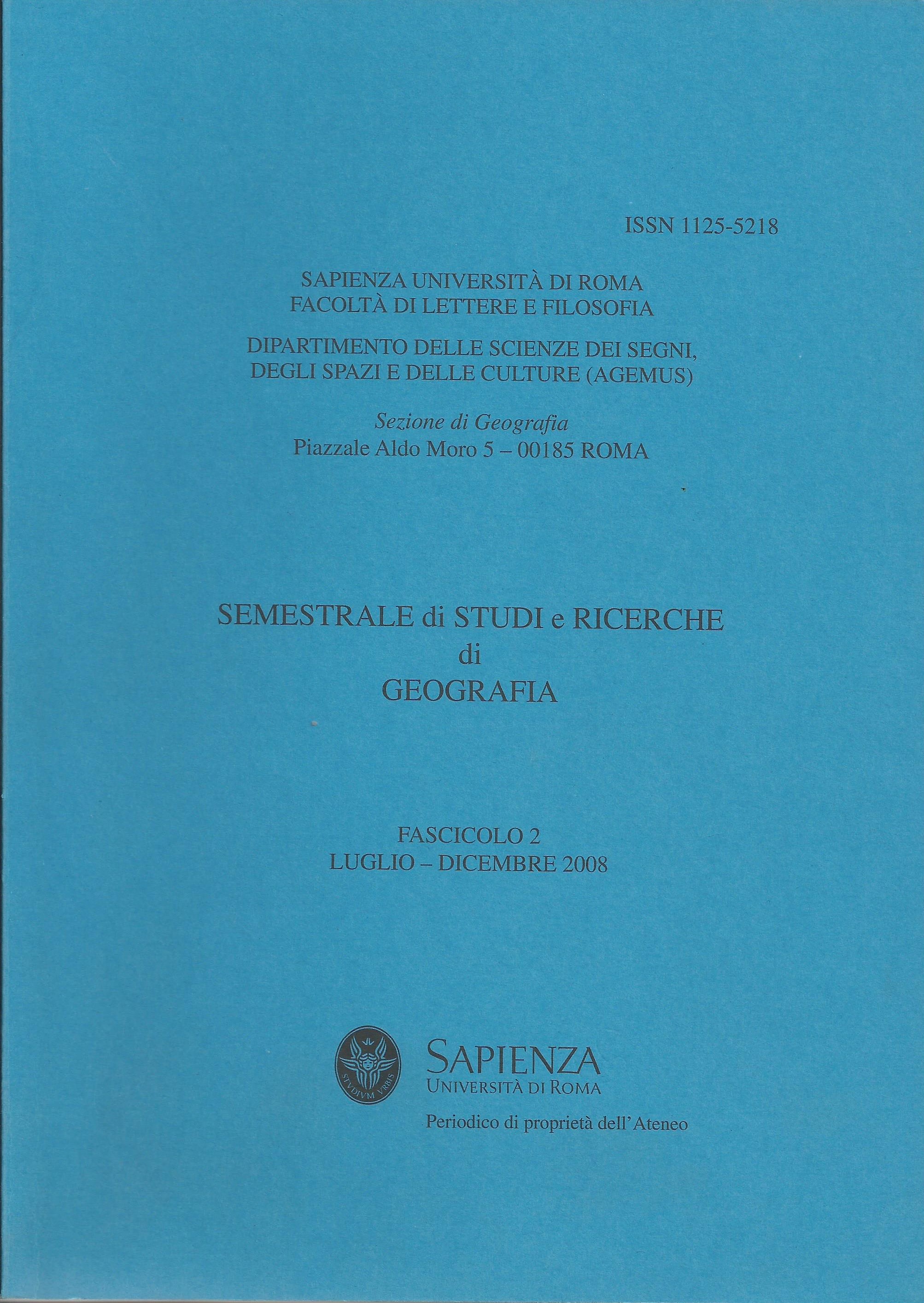Applicazioni GIS per gli itinerari e le aree turistiche del Molise
DOI:
https://doi.org/10.13133/1125-5218.15307Abstract
The analysis of tourist data from the past few years confirms the difficulties of the Molise region to be competitive compared to the other Italian regions because of the current lack of a tourism “made in Molise” and because of the weak promotion of local resources. After quantifying the entity of flows and the accommodation facilities of the Molise region, in order to identify the areas which need more specific intervention, we use Geographical Information Systems (GIS) to carry out two main objectives. Firstly, we analyse the land cover types in order to recognise the pre-eminent territorial features and the tourist vocational areas, with particular attention to agricultural, natural and semi-natural areas. Secondly, we propose criteria to evaluate the historical and cultural heritage of the different municipalities and we identify the main centres and those which can be considered destinations with interesting pull factors to be connected by different routes. In this process, aiming at the renewal of the Molisan tourist system, natural and rural landscapes together with the network of castles and the authentic nature of the components can act as the first factors in building the basis of a more solid tourist framework.
En matière de tourisme, par rapport aux autres régions italiennes, l’analyse des données de ces dernières années confirme que la région Molise a du mal à être compétitive, actuellement le tourisme “made in
Molise” fait défaut, et la promotion des ressources locales est insuffisante.
Après avoir quantifié les types de flux et les possibilités d’accueil du Molise, nous faisons appel au Système d’Information Géographique (GIS) pour identifier les zones qui nécessitent des interventions plus spécifiques, et mener à bien nos deux principaux objectifs. Premièrement, nous analysons les types de couvertures paysagères pour repérer les aspects territoriaux qui en valent la peine et les zones à potentiel touristique, nous sommes particulièrement attentifs aux zones agricoles, naturelles ou semi-naturelles. Deuxièmement, nous proposons des critères d’évaluation de l’héritage historique et culturel des différentes municipalités, nous identifions les principaux centres et ceux qui, accessibles par des itinéraires différents, peuvent être considérés comme des destinations à fort pouvoir attractif. Dans ce processus qui vise au renouveau du système touristique du Molise, les paysages, naturels et ruraux, associés au réseau des châteaux, et l’authenticité de tous ces composants, peuvent devenir les premiers atouts de mise en place d’un cadre touristique plus solide.
##submission.downloads##
Fascicolo
Sezione
Licenza
Gli autori che pubblicano su questa rivista accettano le seguenti condizioni:- Gli autori mantengono i diritti sulla loro opera e cedono alla rivista il diritto di prima pubblicazione dell'opera, contemporaneamente licenziata sotto una Licenza Creative Commons - Attribuzione che permette ad altri di condividere l'opera indicando la paternità intellettuale e la prima pubblicazione su questa rivista.
- Gli autori possono aderire ad altri accordi di licenza non esclusiva per la distribuzione della versione dell'opera pubblicata (es. depositarla in un archivio istituzionale o pubblicarla in una monografia), a patto di indicare che la prima pubblicazione è avvenuta su questa rivista.
- Gli autori possono diffondere la loro opera online (es. in repository istituzionali o nel loro sito web) prima e durante il processo di submission, poiché può portare a scambi produttivi e aumentare le citazioni dell'opera pubblicata (Vedi The Effect of Open Access).


